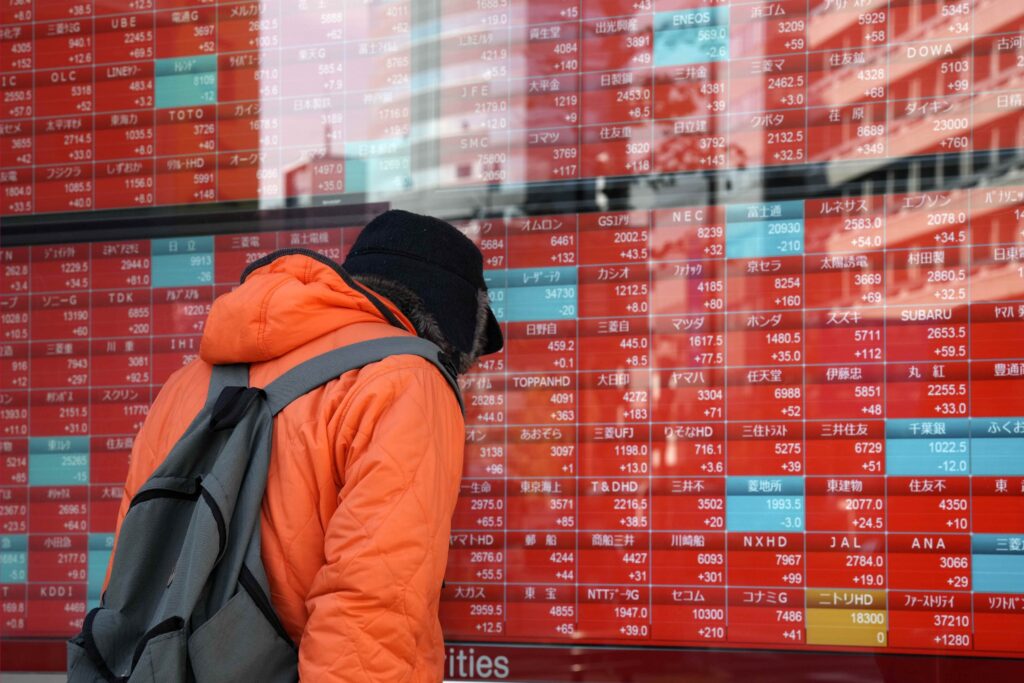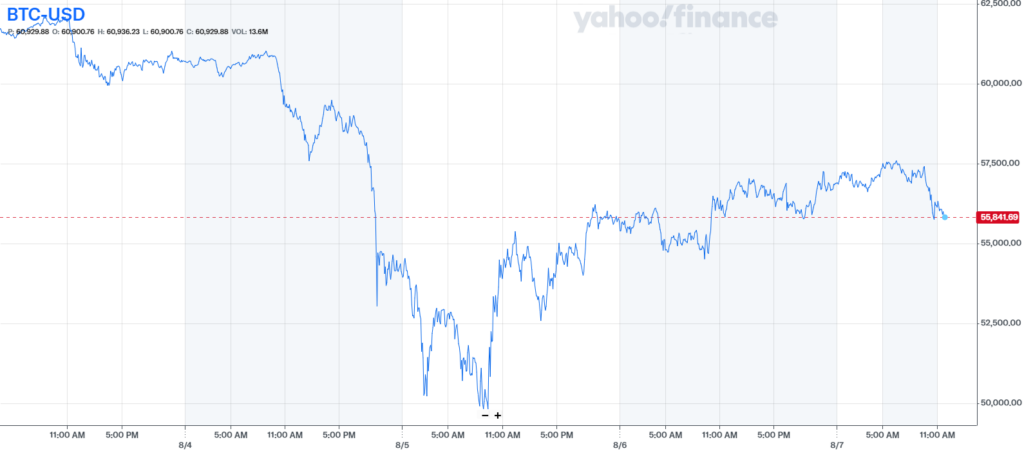
The 2024 global stock market downturn has sent shockwaves through financial circles worldwide. In just three weeks, approximately USD 6.4 trillion has been wiped off, and Monday’s decline stunned even the most experienced traders.
With major indices like the Nasdaq and Nikkei 225 experiencing significant drops, understanding what led to this downturn is crucial. This article aims to demystify the events of the market downturn, providing clear and practical insights to help everyday investors navigate these turbulent times.
In early August 2024, global stock markets experienced a significant crash driven by fears of an impending recession.

The downturn began on Monday, August 5, triggered by disappointing earnings reports and a weak July jobs report. Major indices fell sharply: the S&P 500 dropped 2.9%, the Nasdaq 4.5%, and the Euro Stoxx 2.7%.

Asian markets fared even worse, with the Nikkei plummeting 12.4%, Taiwan’s TAIEX falling 8.4%, and South Korea’s KOSPI decreasing 8.8%. Australia’s ASX 200 closed 3.7% lower, marking its largest one-day drop since May 2020.

The VIX index, which measures market volatility, surged to multi-year highs of 65.7, only surpassed by the peaks of 96.4 during the 2008 financial crisis and 85.5 during the COVID-19 pandemic.
Several factors combined to create this perfect storm in the global markets:
1. Poor earnings reports
The collapse was partly triggered by disappointing earnings reports from major companies like Amazon, which missed revenue estimates by USD 1 billion, and Intel, whose earnings per share plummeted by 30% compared to the previous quarter. These reports not only fell short of market expectations but also highlighted broader economic weaknesses.
2. Weak economic indicators
A weak July jobs report further fuelled recession fears. Nonfarm payrolls grew by just 114,000 in July, significantly below the downwardly revised 179,000 in June and the Dow Jones estimate for 185,000. The unemployment rate edged higher to 4.3%, its highest since October 2021, triggering an economic rule on recessions. This suggests that the economy might be cooling down faster than anticipated.
3. Interest rate changes
Japan’s surprise interest rate hike played a crucial role in the market turmoil. The Bank of Japan raised rates by 15 basis points, which led to the unwinding of the popular yen carry trade. This move sent shockwaves through the global financial markets, contributing significantly to the sell-off. The sell-off in Japanese markets intensified on Friday, 2 August, with the TOPIX index dropping by 6.14% and falling 13.4% from its peak on 11 July. Foreign investors pulled nearly USD 5 billion out of Japanese stocks over the last two weeks of July, and domestic funds also became net sellers of their own market.

4. Major stake adjustments
Berkshire Hathaway’s decision to drastically reduce its massive Apple stake by approximately 50% sent shockwaves through the market. This move by Warren Buffett’s conglomerate, which now boasts a record-breaking cash hoard of USD 277 billion, sparked concerns among investors. Many interpreted this as a potential loss of confidence in the overall stock market, even from the legendary investor himself.
The impact of the market collapse varied across different regions, each experiencing its own set of challenges:
Asia
Japan’s Nikkei 225 experienced a dramatic fall, wiping out all of its gains for the year. The Bank of Japan’s interest rate hike not only affected the Nikkei but also led to significant declines in other Asian markets. South Korea’s Kospi and Taiwan’s TAIEX saw some of their worst performances in decades, driven by substantial drops in semiconductor stocks like Samsung Electronics and TSMC.
Australia
The ASX 200’s decline was led by losses in IT stocks, although the country’s strong commodity sector helped cushion the blow somewhat. Major mining companies like BHP and Rio Tinto saw relatively smaller declines, indicating a degree of resilience in the face of broader market turmoil.

Cryptocurrencies
Bitcoin and other major cryptocurrencies also took a hit. Bitcoin lost 19% of its value since Friday, crashing below USD 50,000. This decline reflected a broader risk-off sentiment gripping the markets, as investors moved away from volatile assets.
The market collapse has reignited fears of a global recession, driven by differing central bank strategies. The Bank of Japan raised interest rates by 0.25% to 0.75% to tackle inflation, while the Federal Reserve chose not to cut rates, adding to global uncertainty and volatility.
Geopolitical tensions have also heightened investor anxiety. Increased conflicts in the Middle East, particularly between Iran and its neighbours, have disrupted oil supplies and spiked crude oil prices. Additionally, the U.S. presidential election cycle has become increasingly unpredictable, with key candidates presenting conflicting economic policies. These factors, combined with existing economic weaknesses, have created a turbulent environment for the markets.

For traders, the market downturn can be both daunting and confusing. Here are some practical steps to navigate these uncertain times:
1. Immediate actions: Avoid panic selling. It’s important not to make hasty decisions based on short-term market movements. Instead, reassess your portfolio and consider whether your current investments align with your long-term financial goals.
2. Long-term strategies: Diversification is key. Ensure that your portfolio is diversified across different asset classes to spread risk. Focus on value investments and maintain a balanced portfolio to withstand market volatility.
3. Opportunities and risks: Market downturns can present buying opportunities. If you have a long-term investment horizon, consider taking advantage of lower prices to buy quality stocks at a discount. Be cautious and conduct thorough research before making any investment decisions. For up-to-date insights and analysis that can help you navigate these market conditions, consult VT Markets’ daily market reports.
The 2024 global stock market downturn has undoubtedly created a challenging environment for investors. However, by understanding the factors that led to this downturn and adopting a strategic approach, traders can navigate these turbulent times. Stay informed, remain patient, and focus on long-term investment strategies to weather the storm and potentially benefit from the eventual market recovery.